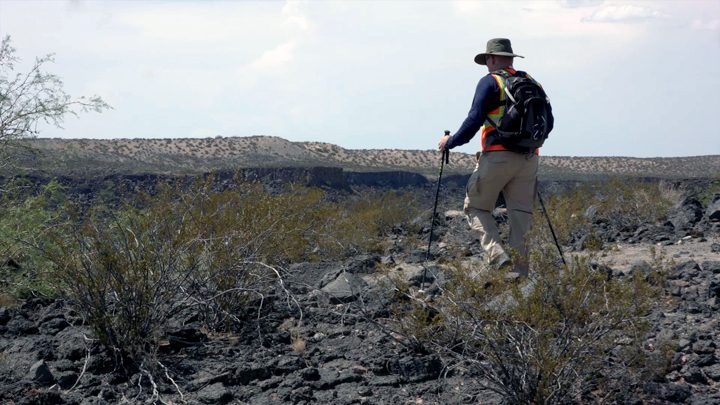
We came to Potrillo to conduct field excursions that simulate EVAs, or extravehicular activities, which are like the moonwalks that Apollo astronauts took on the lunar surface. Future astronauts might conduct something like a moonwalk on the surface of another rocky planetary body. Our research helps answer the question: If astronauts are going to explore volcanic features on the surfaces of other planets or moons, what kinds of instruments should they bring, and how will they use the different types of data that they collect?
Astronaut Butch Wilmore and geologist Liz Rampe, both from Johnson Space Center in Houston, joined us for the EVA activities. They carried out some of the tasks that a crew might perform, and then gave us feedback about the use of instruments during EVAs. This feedback is valuable for us because it’s from the perspective of someone who has conducted spacewalks from the International Space Station (Wilmore) and of someone who has expertise as a field geologist and operating rovers on the surface of Mars (Rampe).
This information helps us build and prepare to use instruments that would be ready for spaceflight and planetary exploration. Goddard has a long history of building instruments, and we’re adding to that legacy by learning as much as we can about how well different kinds of instruments work for the tasks that explorers would have to perform on the surfaces of other planetary bodies.
NASA astronaut Butch Wilmore talks about simulated extravehicular activities that the team conducted in the Potrillo volcanic field and how the excursion sites were chosen. NASA/GSFC
Footage from the camera worn by Butch Wilmore shows Liz Rampe working with him on simulated extravehicular excursions at Kilbourne Hole. NASA/GSFC
Tags: geology, GIFT 2017, planetary analogs, solar system



